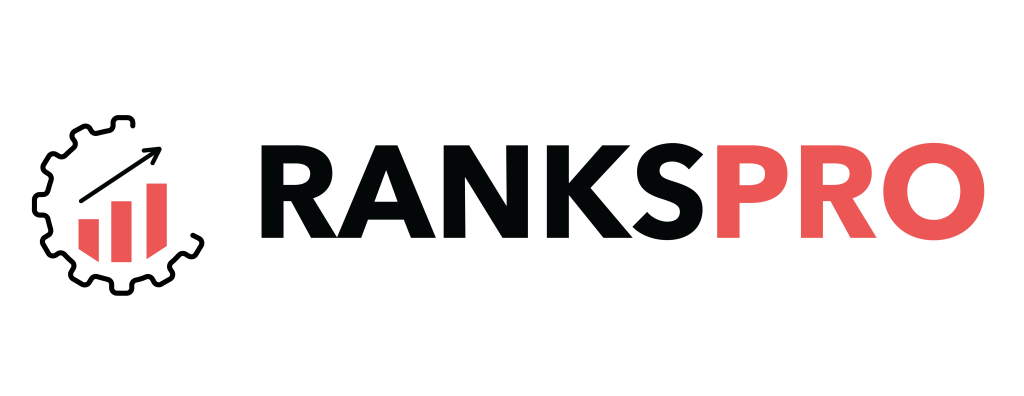Ever think of what’s behind the web pages you visit, including the animations, typographies, and other elements? These web pages are just the representation of what developers have built using their logic and concepts.

Collaboratively, these elements reside in the backend of the web page, known as “Source Code”. Every page that is live on Google search has a source code behind it.
In this guide, we will learn more about it, how to view it, and what’s included in the source code for SEO.
What is a Website Source Code?
When you interact with the web, whether by entering a Uniform Resource Locator (URL) in the address bar, clicking on a hyperlink, or submitting data through a form, you initiate a request for information from a designated web server. As a result, you will see the requested web page from a dedicated server on your browser.
This webpage is comprised of HyperText Markup Language (HTML) code, which serves as the foundational structure of the content. Additionally, JavaScript scripts may be included to provide interactive elements, and stylesheets or links to Cascading Style Sheets (CSS) files dictate the visual presentation of the webpage.
.png)
Collectively, this trio of HTML, CSS, and JavaScript constitutes the website’s source code. Your web browser interprets and processes this code, ultimately rendering the familiar visual elements you experience when browsing a website.
Search engines, like Google, employ sophisticated algorithms to analyze a website’s source code, along with various other factors, to determine the website’s position within search results.
Importance of Reading a Website Source Code?
Every webpage is essentially a text file formatted in HyperText Markup Language (HTML) and stored on a web server. Web browsers function by interpreting and translating this code, ultimately presenting the information on the user’s screen in a familiar and user-friendly format.
HTML documents have the capability of incorporating links to other resources and supplementary files, further enriching the user experience. The HTML code underlying a website is also a critical data source for search engine crawlers, automated programs that systematically explore and index the web.
By analyzing the content of a webpage, these crawlers determine whether it should be included in their search engine’s index, assess its relevance to user queries, and evaluate its level of optimization for search engine algorithms.
By effectively utilizing HTML elements and adhering to SEO best practices, website owners can significantly improve their website’s ranking in search results.
How to View Source Code?
Understanding a webpage’s underlying structure often necessitates examining its source code. This guide outlines the various methods for accessing the source code on popular web browsers across Windows/Mac operating systems:
Windows/Microsoft Systems:
- Firefox: Utilize the keyboard shortcut CTRL + U or navigate through the menu by selecting “Web Developer” followed by “Page Source” from the “Firefox” menu. Then, you just need to right-click anywhere on the page after which you will see options, from which you should choose “View Page Source.”
- Microsoft Edge/Internet Explorer: Similar to Firefox, press and hold CTRL + U or right-click on the webpage and select “View Source.”
- Google Chrome: Access the source code by holding CTRL + U or by clicking on the three horizontal lines located at the top-right corner of the browser window. You will see the options in the menu, from where you need to click on “Tools” and then choose “View Source.”
- Opera: Employ the CTRL + U keyboard shortcut or right-click on the webpage and choose “View Page Source.”
Mac Systems:
- Safari: For Safari users, utilize the keyboard shortcut Option + Command + U. Another option is to right-click at any place on the web page, and then select the option “Show Page Source” from the menu.
- Firefox: Similar to the Windows version, press Command + U or right-click and select “Page Source.” Another way to open it is to select “Tools” from the menu. Then click on “Web Developer” and select “Page Source.”
- Google Chrome: Mac Chrome users can access the source code by pressing Option + Command + U or by right-clicking on the webpage and selecting “View Page Source” from the context menu.
To expedite locating specific elements within the source code, a common practice for tasks like SEO, web design, or troubleshooting, utilize the CTRL + F keyboard shortcut (or Command + F on Mac) to activate the find function.
Important SEO Elements in Source Code
1. Title Tags
Considered the cornerstone of on-page SEO, title tags are displayed in search engine results pages (SERPs). They act as the headline for your webpage, influencing user click-through rates. Every single page on your website should have a unique title tag enclosed within <title> and </title> tags.
.png)
These tags are typically located near the top of the <head> section of the source code. Here, you need to add relevant keywords in the title tag so that search engines can relate the context of the page more accurately while prioritizing it to show on SERPs.
2. Meta Descriptions
Meta descriptions function as the sales pitch for your webpage, enticing users to click on your link in SERPs. They are limited to approximately 160 characters, so crafting a compelling description within this constraint is essential.

While meta descriptions don’t directly impact search ranking, they can significantly improve click-through rates by effectively summarizing the content and value proposition of your webpage. Look for <meta name=”description”> within the source code to locate your meta description.
3. H1 Headings
Your H1 heading is the headline of your webpage, the first thing visitors see. It’s crucial for grabbing attention and providing a clear understanding of the page’s content.
.png)
While HTML5 permits multiple H1 tags, using just one per page is best practice. This maintains clarity and improves user experience. Stuffing keywords in headings is not good for your web page; it harms readability and can negatively impact your search engine rankings.
To find your H1 heading, examine your page’s source code for the <h1> and </h1> tags. By optimizing your H1, you enhance user experience and improve your website’s search engine visibility.
4. Nofollow Links
Backlinks, or incoming links from other websites, are generally seen as a vote of confidence in your content. However, not all links are created equal. Nofollow links, denoted by the rel=”nofollow” attribute, instruct search engines to disregard their link equity.
.png)
While they don’t directly contribute to your page’s authority, they can serve other purposes such as preventing spam or directing users to specific content without influencing search rankings.
5. Robots Meta Tags
Robots meta tags act as gatekeepers, communicating your preferences to search engine crawlers. The noindex tag explicitly prohibits a page from appearing in search results, while the nofollow directive prevents search engines from following links on the page.
.png)
By analyzing the source code, you can identify potential issues with these tags, such as accidentally preventing search engines from indexing the page or specific elements (images, scripts).
Look for robot meta tags containing “noindex” to ensure your content is properly indexed by search engines. You can modify these tags to allow indexing if necessary.
6. Structured Data
Structured data is a form of markup that provides search engines with additional context about your content. By using formats like JSON-LD, you can enrich your webpage’s information, potentially leading to enhanced search results, such as rich snippets or knowledge graphs.
This added layer of semantic information can significantly improve user experience and click-through rates. Structured data typically appears within <script type=”application/ld+json”> tags, containing the specific data markup for your webpage’s content.
Examining the source code allows you to identify potential issues with your structured data implementation, discover optimization opportunities, and understand how search engines interpret and present your website.
7. Analytics Installation Check
Verifying the installation of tracking codes for website analytics tools like Google Analytics is crucial. Search for “UA-” within the source code to locate the Google Analytics tracking code.
Alternatively, browser extensions like Google Tag Assistant or tools like Screaming Frog SEO Spider can be used to ensure proper Analytics installation across all web pages on your website.
Optimize your Website Source with RanksPro
While manually inspecting your website’s source code can be informative, the process can be time-consuming and error-prone for larger websites. This is where SEO audit tools like RanksPro come in.
RanksPro offers a comprehensive SEO audit feature that scans your website’s source code, identifying critical technical SEO issues that could be hindering your search ranking. Here’s how RanksPro can specifically help you optimize your source code:
- Identify Missing or Duplicate Title Tags and Meta Descriptions: RanksPro scans your website’s code to ensure every page has a unique and well-optimized title tag and meta description.
- Detect H1 Tag Issues: The tool analyzes your H1 tag usage, flagging missing H1 tags, duplicate H1 tags, and H1 tags exceeding optimal character length.
- Uncover Robots.txt Blocking Issues: RanksPro examines your robots.txt file, a part of your source code, to identify any accidental blocking of search engine crawlers from accessing important content.
- Highlight Structured Data Errors: The audit scans for structured data implementation issues within your source code, pinpointing any errors that might prevent search engines from understanding your content.
- Generate Actionable Reports: RanksPro compiles the results of your source code analysis into a clear and actionable report. This report prioritizes identified issues based on their severity, allowing you to focus on the most impactful optimizations first.
By leveraging RanksPro’s SEO audit tool, you can streamline the process of analyzing and optimizing your website’s source code for better technical SEO.
Combined with your understanding of the key SEO elements within the code, it empowers you to take control of your website’s search engine visibility and achieve higher rankings in SERPs.




